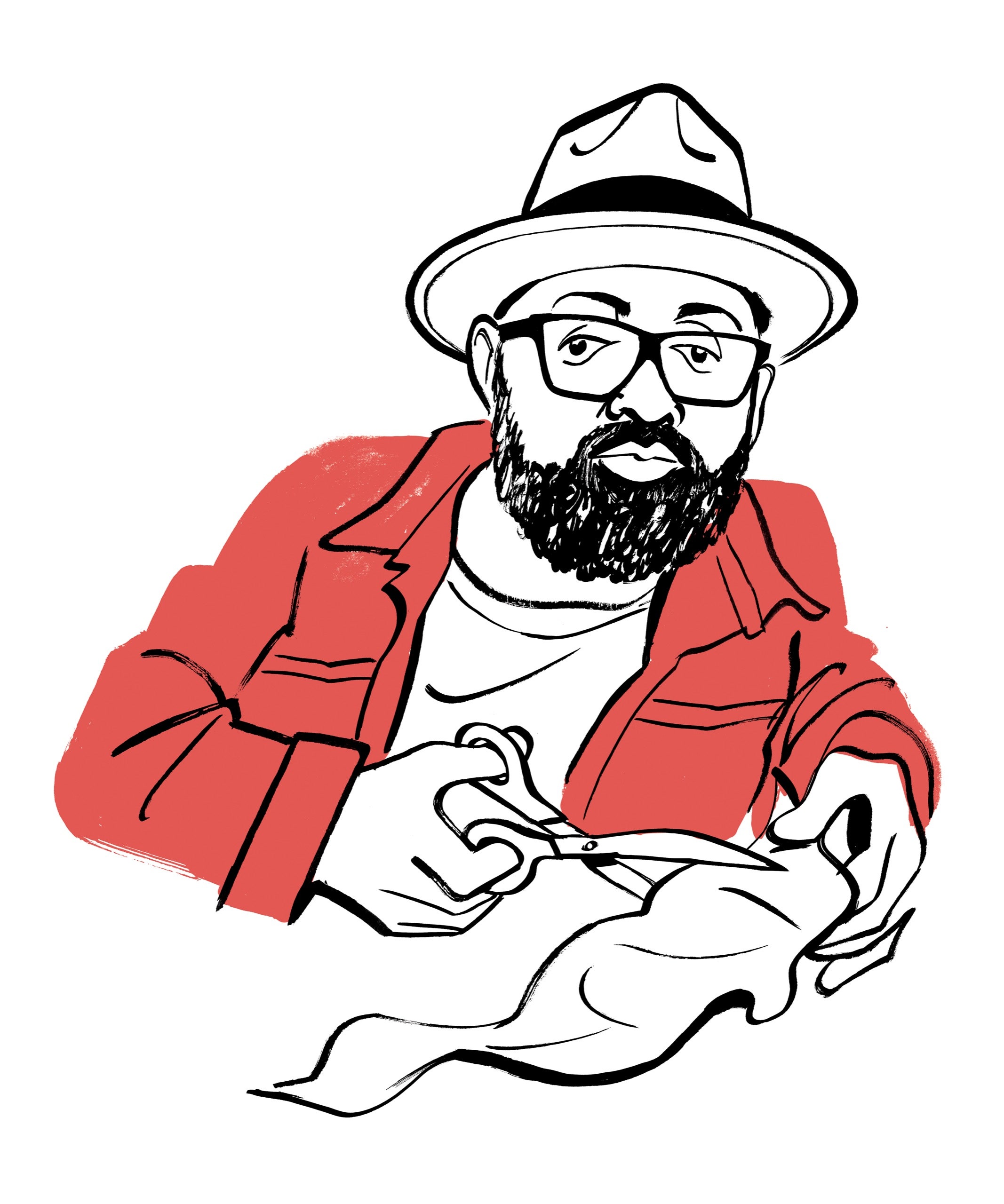The Poet Writing on Prison Underwear

The poet Reginald Dwayne Betts was in Brooklyn the other day, standing over a five-gallon plastic bucket filled with fibre slop. He was in town from New Haven, at his friend Ruth Lingen’s printmaking studio, helping to make a batch of handmade paper to be used in the printing of his next book. A Ping-Pong table was piled high with socks, blankets, T-shirts, long underwear, and stacks of letters, all of which had recently arrived from people incarcerated throughout the U.S. “This is our liquid slurry!” Lingen said, giving the bucket a whiff. She offered tasting notes: “Overtones of Brooklyn water and filtered sediment.” Betts, who was dressed in raw Japanese denim, a whiskey-brown fedora, and a “RUSSIA IS A TERRORIST STATE” T-shirt, tied on a black apron and poured the slurry into an eleven-by-fourteen-inch wooden deckle box—a papermaking mold. He jiggled it as if panning for gold, then pressed the resulting pulp sheet onto a piece of felt. “That’s called couching,” he said. (It’s pronounced “coo-ching.”) Lingen let the sheet rest for a few hours before placing it in a platen press; in a few days, the slop would dry into a soft, semi-smooth piece of paper.
Betts’s interest in papermaking began a few years after he graduated from Yale Law School. In 2018, he was clerking for a federal appellate judge in Philadelphia. By day, he evaluated habeas-corpus petitions and drafted bench memos; at night, he’d write poems, and letters to friends who were locked up. “I was living in two different worlds,” he said. “I could’ve easily been them.” In 2005, eight months before his twenty-fifth birthday, he was released from the Coffeewood Correctional Center, in Virginia, after spending eight years in prison for a carjacking. With his papermaking project, he was attempting to create meaning from his friends’ incarceration in a way that his poetry and his law practice had not. “The paper became a kind of bridge—the art was to remember that they were still going through something,” he said.
In 2019, Betts collaborated with the artist Titus Kaphar on an exhibit at MOMA PS1, focussed on abuses in the criminal-legal system. (Both men are recipients of MacArthur “genius” grants.) Etched portraits of incarcerated people, by Kaphar, were accompanied by “redacted” poems, by Betts, which turned legal documents into verse. The duo commissioned a designer to create a typeface based on elements from Times New Roman and Century Schoolbook, which is used by the Supreme Court in legal opinions. The idea was to make the letter of the law their own. “That’s, like, nerd layer,” Betts said. “You gotta know typeface to even get it.”
Betts and Kaphar wanted their paper to be as expressive as the words and images printed on it. “I was telling my man at the printer, ‘I want to use handmade paper,’ ” Betts said. “And he was, like, ‘You don’t want to use handmade paper unless the materials have meaning in it.’ And I was, like, ‘Oh, shit! I’m going to get my friends in prison to send me their clothes, and then we’ll make paper out of them.’ ” Christopher Tunstall mailed his sweatpants. Rojai Fentress sent T-shirts and socks. Kevin Williams and Terell Kelly offered sweatshirts and thermal pants. “All of it had the smell of time, but also just the wear of time,” Betts said. “Some of the dudes might’ve had these clothes for a decade.”
Betts poured himself a single-malt Scotch and sat down at the table to cut up some garments for the project. “This is the tedious part,” he said, picking up a pair of scissors. He cut a sweatshirt into small squares, which Lingen would later add to a boiling pot. (Recipe: “Seventy-five per cent water, twenty-four per cent sweatshirts or socks, half a per cent soda ash, and half a per cent of an additive called sizing,” Lingen said. ) Snip, snip, snip. “I ended up getting that whole group out of prison,” Betts said. Snip, snip. Williams came home in 2019, after spending twenty-six years inside. Fentress left prison on July 1, 2020, following a twenty-four-year stint. Tunstall died that year, “about six months after he came home,” Betts said. Snip, snip, snip. “At least he got to be out.” Betts put down his scissors. “This thing has become kind of like a memorial,” he added.
At around five, Betts headed to Manhattan for a book signing with Kaphar for a volume, “Redaction,” that was inspired by the PS1 show. In Betts’s bag were a few letters from friends who were still locked up. “They called a letter a ‘kite’ in prison,” he said. “I always thought it was beautiful—the freedom that a kite seems to have, and that it gives you.” He added, “And it’s just made of paper!” ♦
This post was originally published on this site be sure to check out more of their content.







